Cyclocross racing rewards bike-handling expertise far more than other branches of road racing. There are several cyclocross skills you’ll need to get the most out of races, and many of these are also handy on the road.
Practising getting on and off your bike, as well as running with it, will make your initiation to cyclocross racing less daunting.
Although you only do it once, getting out of the blocks quickly is one of the most important parts of the race. As you progress, you’ll learn how to scythe through corners by not touching the brakes and scale steep banks without getting off the bike.
The most advanced racers will also bunny hop to good effect to maintain speed and avoid punctures.
Key cyclocross skills and how to practise them
Cyclocross starts
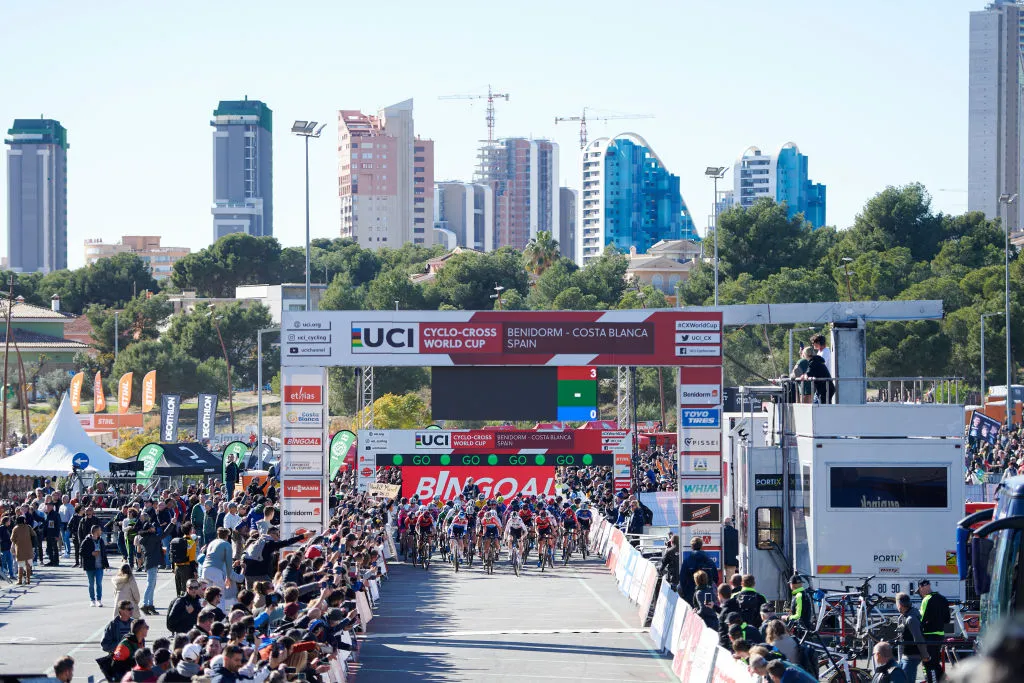
A fast start in a cyclocross race helps avoid congestion at the first corners and can be pivotal to overall positioning.
The term ‘holeshot’ describes the flat-out dash from the start line to the first bend. The fastest riders to get up to speed can break clear or make up ground if they’ve started near the back of the grid.
You need to react swiftly to the start signal, clip in during the first pedal stroke and be in the correct gear to power away. The best cyclocross shoes are a massive help with this.
If you’re new to riding with clipless pedals, this is a key skill to practise – you want the process of clipping in to feel like second nature.
How to improve your cyclocross starts
- Find the type of terrain you are likely to start on
- Choose a gear low enough to ride from stationary, but not so low you’ll spin out
- Clip in one foot, as you would on the starting grid
- Practise clipping in the other foot and pedalling away as hard as you can
Dismounting and remounting your bike
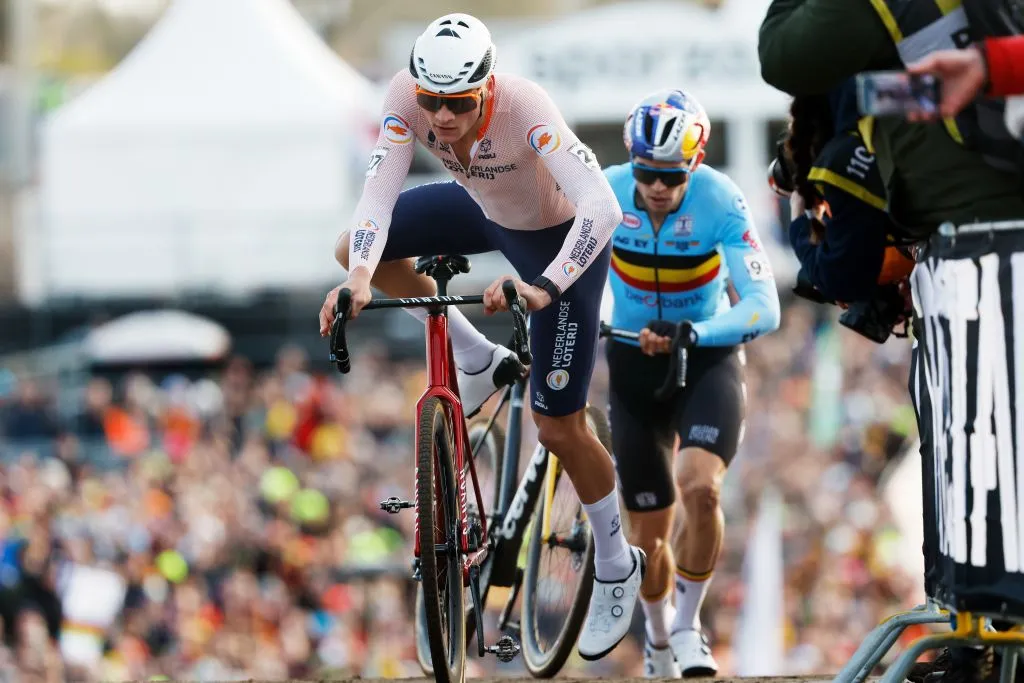
Obstacles, such as barriers, may call for you to get off your bike. Technical sections, such as banks and mud, can often be quicker to run than ride.
On all but the fastest and driest of courses, where you’ll spend more time seated, your aptitude in this area could save or cost you minutes.
Running dismounts maintain precious speed you’ve worked hard to build up. Remounting on the move gets you back to speed quicker after a fall or bike change.
Mastering this is a key skill for any serious cyclocross racer and, as silly as it might feel, practising this is key if you want to be competitive.
How to improve your cyclocross dismounts and remounts
Dismounting
- Lay a stick or marker on flat ground in front of you as your obstacle
- Pedal towards it holding the hoods
- About 10m away, unclip your right foot, keeping your left foot at the bottom of the pedal stroke
- Bring your right leg over the bike behind your left
- Unclip your left foot and switch into a run
Remounting
- From the left side of the bike, push off with your hands on the bars
- Take two steps, ending up on your left foot
- Leap off this foot and bring up your right leg with your knee bent
- Try to slide smoothly onto the saddle, making contact with the inside of your right thigh
- Once squarely seated, your momentum should enable you to clip back in while turning the pedals
Carrying and shouldering your bike in cyclocross
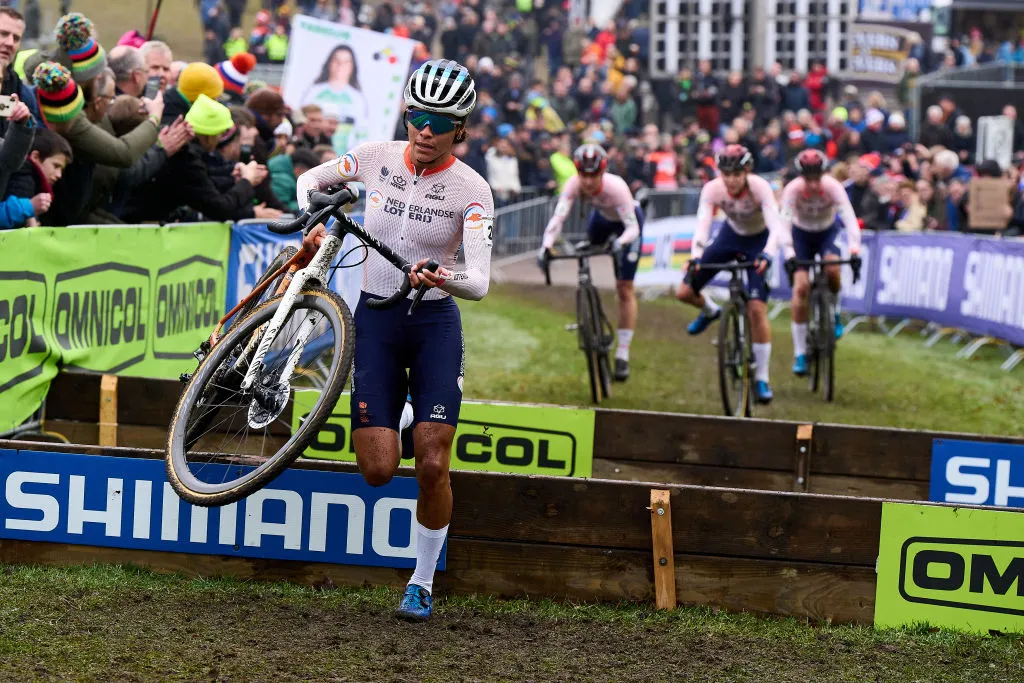
Sometimes, lifting your bike and running is the best way forward on unrideable sections or when competitors have stopped in front of you. If you push the bike over rough or muddy terrain, you’ll find it hard to control and the chain will bounce about.
Thankfully, the best cyclocross bikes are exceptionally light and relatively easy to carry. Many will also have specially shaped top tubes to aid carrying.

Both techniques for doing so are more comfortable once you’ve removed the bottle cages from your frame.
How to practise carrying your bike for cyclocross racing
- Once dismounted, hold the brake hood with your left hand and put your right through the frame
- Holding the underside of the down tube, lift the top tube onto your right shoulder
Taller riders can pull off this alternative, more secure method:
- Lift the bike by the top tube and pass your right elbow through the frame to rest it on your shoulder
- For stability, grip the left brake hood or drop
- Pump your left arm to propel you as you run
Bunny hopping in cyclocross

This technique gets you over small obstacles without having to dismount. It can bring high rewards.
At regional races, you’ll see the top riders jump skilfully over wooden barriers and overtake rivals as they remount and clip in.
But, as anyone who has not gained enough air to clear the blocks of wood will testify, bunny hopping is high-risk.
Only a fraction of pros in the men’s and women’s World Cup series will dare try it. Loss of time, injury and a race-ending mechanical are possible pitfalls.
If you’re unsure whether it’ll pay off, it’s best to use the running dismount.
How to practise bunny hops for cyclocross racing
- Imagine an obstacle and ride towards it
- Pick yourself out of the saddle with level and bent knees
- Lean your weight back while pulling the handlebar towards you
- With the front wheel airborne, move your weight forwards, and push the handlebar away and down
- This should pop the back wheel up
- Pulling up with your feet can also help clear the obstacle
Cornering in cyclocross racing

Choosing the right line through a corner increases your exit speed, enabling you to surge out of it.
Look where you want to go, and then your head and body should follow. By holding your weight back, the front wheel can turn freely and will be less likely to lose grip.
A straighter line is a faster line, so seek traction and take the widest line you can before braking and then turning. Tyres struggle to do both at the same time without understeering or sliding.
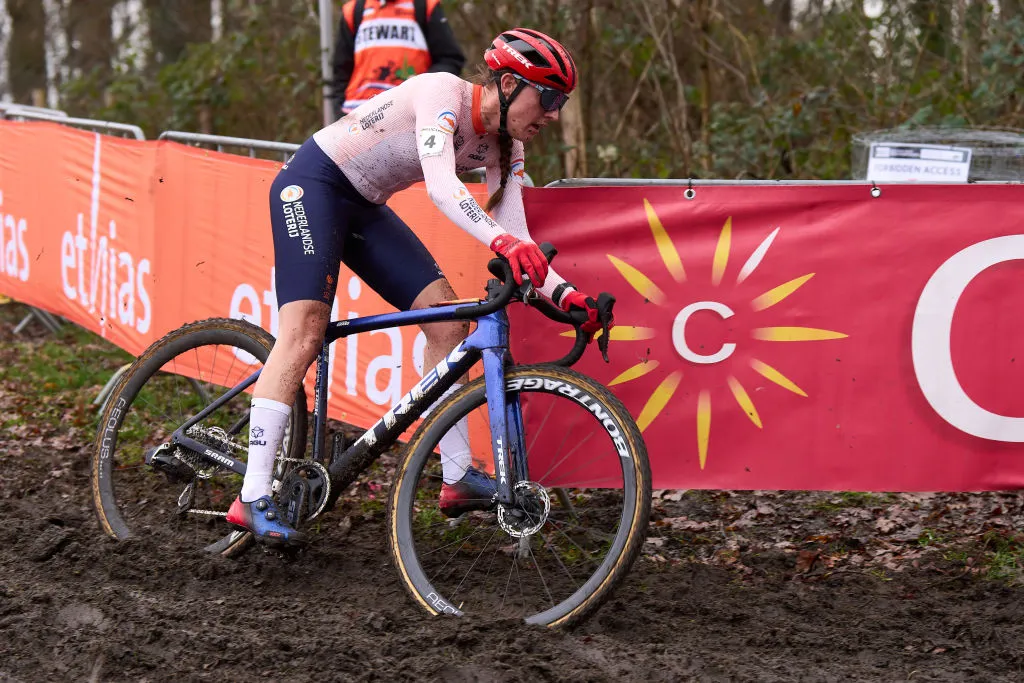
On reverse cambers and slippy bends or descents, where grip is at a premium, pros often employ a technique called ‘scooting’.
They unclip one foot, usually the inside, and touch the ground for balance or to propel themselves around the corner.
How to improve your cornering in cyclocross racing
- Lay out cones in a 20m square and ride round and round as fast as you can before changing direction
- Place cones in a line, as tight or far apart as you want, and ride hard, weaving in and out
Climbing banks
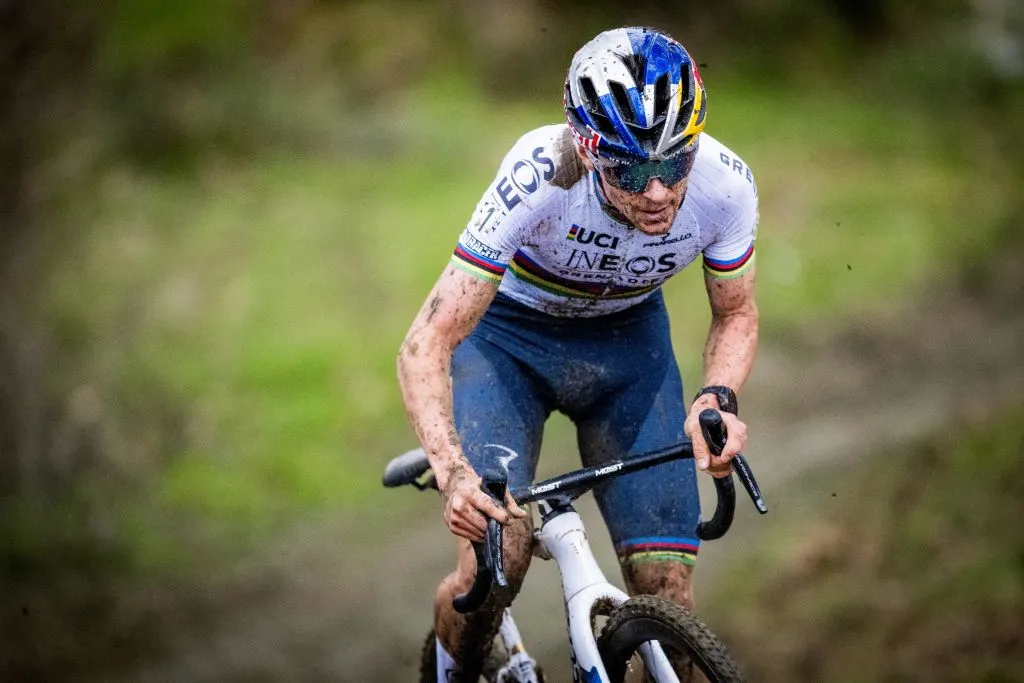
Racers who can ride over short, sharp climbs can carry more speed over the crest and put time into rivals.
They dance athletically past us mere mortals scrambling and slipping our way up – made more ungainly by a two-wheeled burden.
But there’s no magic involved. They’ve just perfected the technique, and so can you.
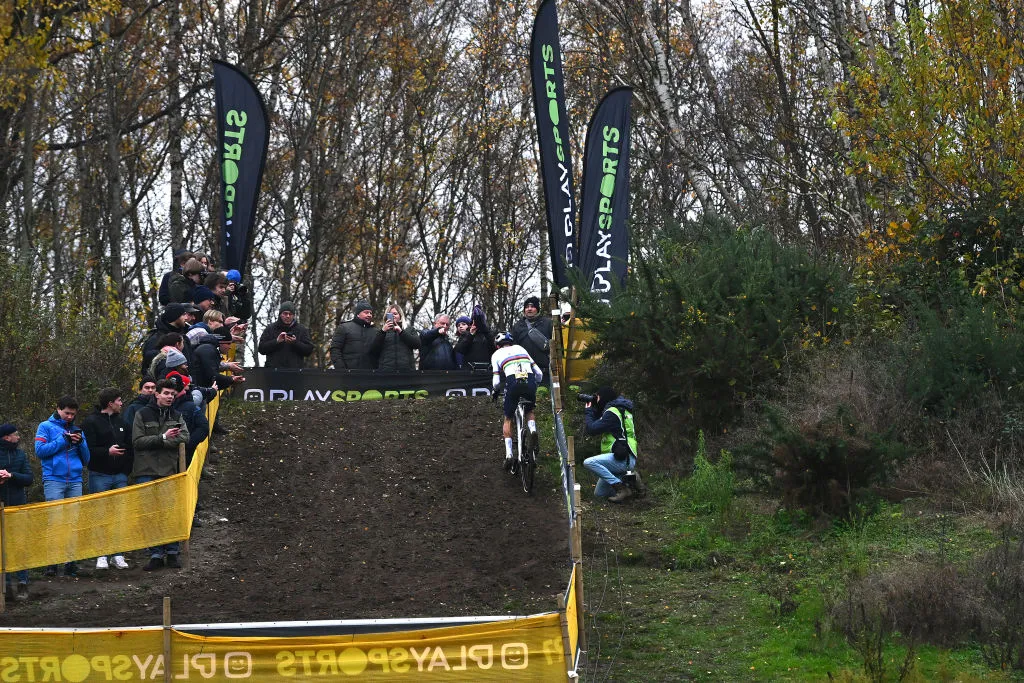
Time taken experimenting with gearing and finding the best line on practice laps will be well spent. Aim to carry as much speed into the bottom as possible, and select the appropriate gear in advance so you don’t falter later.
Adjust your weight distribution between the rear wheel, for grip, and the front for steering and to stop it lifting. It’s a matter of strength to keep the pedals turning.
How to improve your climbing for cyclocross racing
- Find a sheer uphill bank or flight of steps 10–15m long
- Ride up as far as you can
- Dismount if you need, shoulder the bike and sprint up
- Drop back down and repeat
